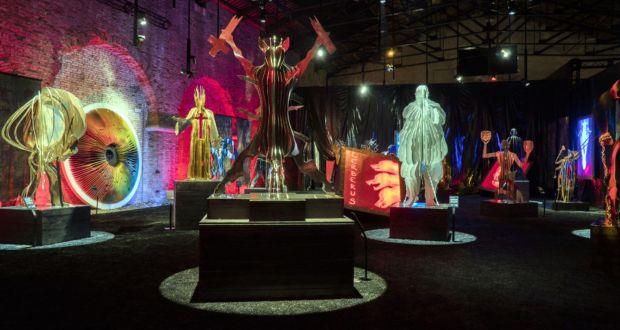(MENAFN- USA Art News)
In recent years, virtual reality (VR) art has been gaining momentum as a revolutionary form of artistic expression. VR art exhibits have become increasingly popular across the United States, offering viewers a unique experience that blurs the line between reality and imagination. As we look ahead to the digital art trends of 2024, it is clear that VR art exhibitions will continue to play a significant role in shaping the artistic landscape.
The Rise of Virtual Reality Art
Virtual reality art allows artists to create immersive worlds that viewers can explore and interact with in ways that were previously unimaginable. By using VR technology, artists can transport viewers to fantastical landscapes, challenge traditional notions of space and perspective, and push the boundaries of what is possible in the realm of digital art.
VR art exhibits have been popping up in cities across the US, from New York to Los Angeles, offering viewers a chance to experience art in a whole new way. These exhibits often feature a mix of traditional and digital art forms, blending the physical and virtual worlds to create a truly unique and interactive experience.

The Impact of VR Art Exhibitions
One of the key benefits of VR art exhibitions is their ability to democratize the art world. By using virtual reality technology, artists can reach a wider audience than ever before, allowing people from all walks of life to experience and engage with their work. This democratization of art is a crucial step towards making art more accessible and inclusive for everyone.
VR art exhibits also offer artists new opportunities to experiment with different mediums and techniques. By working in virtual reality, artists can push the boundaries of what is possible in terms of scale, color, and composition, opening up new creative possibilities that were previously out of reach.
Furthermore, VR art exhibitions provide a platform for artists to engage with contemporary social and political issues in a meaningful way. By addressing topics such as climate change, social justice, and mental health, artists can use VR technology to create immersive experiences that challenge viewers to think critically about the world around them.
Looking Ahead to 2024: Digital Art Trends
As we look ahead to the digital art trends of 2024, it is clear that virtual reality art exhibits will continue to play a major role in shaping the artistic landscape. With advancements in VR technology and an increasing demand for immersive experiences, VR art exhibits are poised to become even more popular in the years to come.
In addition to VR art exhibits, other trends to watch out for in the world of digital art include the rise of augmented reality (AR) art and the continued integration of technology into traditional art forms. AR art, which overlays digital images onto the physical world, offers artists new ways to interact with their surroundings and create dynamic, interactive experiences for viewers.
The integration of technology into traditional art forms is also a trend to watch in 2024. More and more artists are incorporating digital tools and techniques into their work, blurring the line between the physical and virtual realms. By embracing technology, artists can push the boundaries of what is possible in terms of creativity and innovation, opening up new possibilities for artistic expression.
As we continue to explore the world of virtual reality art exhibits and other digital art forms, one thing is clear: the future of art is bright, bold, and boundless. By embracing new technologies and pushing the boundaries of what is possible, artists are creating a new era of art that is immersive, interactive, and inspiring.
In conclusion, virtual reality art exhibits are revolutionizing the way we experience and engage with art in the US. By providing viewers with immersive, interactive experiences, VR art exhibits are opening up new possibilities for artistic expression and pushing the boundaries of what is possible in the world of digital art. As we look ahead to the digital art trends of 2024, it is clear that VR art exhibits will continue to play a major role in shaping the artistic landscape, offering audiences a unique and unforgettable experience that blurs the line between reality and imagination.
MENAFN04072024005694012507ID1108409072
Legal Disclaimer:
MENAFN provides the information “as is” without warranty of any kind. We do not accept any responsibility or liability for the accuracy, content, images, videos, licenses, completeness, legality, or reliability of the information contained in this article. If you have any complaints or copyright issues related to this article, kindly contact the provider above.